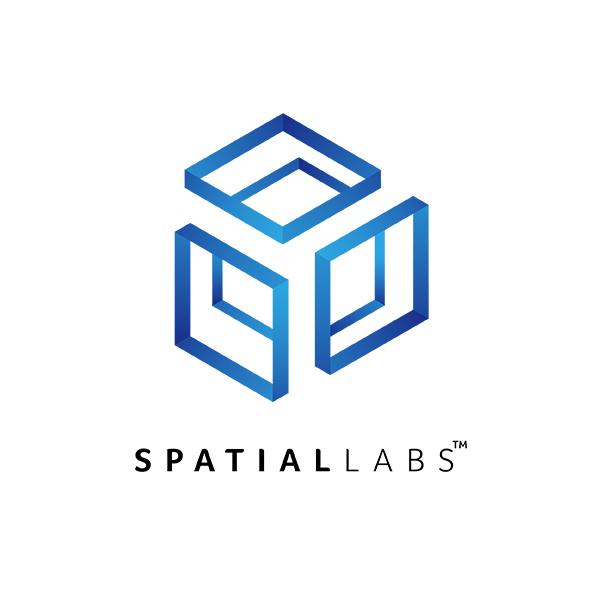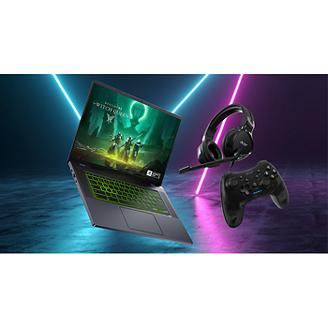-
What Is the Windows Insider Program and Is It Worth Joining?
The Windows Insider Program is Microsoft’s official platform for users who want early access to upcoming Windows features, updates, and system improvements before they reach the public. In this article, we’ll explore what the Windows Insider Program is, how it works, and whether it’s worth joining. You’ll learn what benefits it offers, what risks to consider, and how to get started if you decide to take part in shaping the future of Windows.
What is the Windows Insider Program?
The Windows Insider Program is Microsoft’s official testing and feedback platform that allows users to preview upcoming Windows updates before they are released to the public. It was launched in 2014 alongside Windows 10 to help the company collect real-world feedback and refine new features through community testing. Participants, known as “Insiders,” receive early builds of Windows 10 or Windows 11 depending on the update channel they select.
https://www.youtube.com/watch?v=4M6NWf31jEA
There are several Insider channels, each offering a different balance of innovation and stability. The Canary Channel delivers the earliest experimental builds. The Dev Channel provides newer features that are more stable but still under development. The Beta Channel focuses on near-final versions that are closer to public release. Lastly, the Release Preview Channel offers access to upcoming updates that have already been tested and refined. Together, these channels help Microsoft test new features, collect telemetry data, and ensure compatibility across a wide range of devices before official release.
Purpose and benefits of the Windows Insider Program
The Windows Insider Program serves two main purposes. First, it allows Microsoft to test new features, system updates, and design changes in real-world conditions before a full release. Second, it gives users the chance to experience upcoming versions of Windows early and share feedback that directly influences how the operating system evolves. This approach helps Microsoft identify bugs, performance issues, and compatibility problems long before updates are rolled out to the general public.
For users, the program offers several key benefits. It provides early access to new features and interface improvements, which can be especially useful for developers, IT professionals, and technology enthusiasts who want to stay ahead of changes. It also allows participants to provide feedback through the Feedback Hub app, helping shape the final product. Businesses can use the Insider Program to test future builds in their environments, ensuring that software and hardware remain compatible with upcoming versions of Windows.
However, it is important to note that Insider builds are pre-release versions of Windows and can sometimes include bugs or unfinished features. As a result, Microsoft recommends using the program on a secondary PC rather than a primary work device.
Is the Windows Insider Program right for you, and how to join
The Windows Insider Program can be an exciting opportunity, but it is not suited for everyone. If you enjoy experimenting with new technology, do not mind occasional bugs, and have a spare computer to test early versions of Windows, then joining may be worthwhile. The program is ideal for developers, IT professionals, and users who want to preview new tools and help shape the operating system through feedback.
On the other hand, if you rely on your PC for work, study, or other essential tasks, you may want to avoid installing Insider builds. Preview versions can sometimes cause performance issues or break compatibility with certain apps and drivers. Stability varies by channel, so those seeking fewer issues should stick with the Beta or Release Preview channels instead of the more experimental Dev or Canary builds.
How to Join the Windows Insider Program
Joining the Windows Insider Program is simple:
* Open Settings on your Windows PC.
* Select Windows Update.
* Click Windows Insider Program from the sidebar.
* Sign in with your Microsoft account.
* Choose your preferred Insider channel (Canary, Dev, Beta, or Release Preview).
* Agree to the terms and conditions.
* Restart your device to apply the changes.
After your PC restarts, Windows will automatically download and install the latest Insider Preview build for your selected channel.
To share feedback or report bugs:
* Open the Feedback Hub app.
* Select the issue type and follow the prompts to submit your report or suggestion.
If you later decide to leave the Insider Program:
* Go back to Settings > Windows Update > Windows Insider Program.
* Choose to stop receiving preview builds, or reinstall Windows to return to the public release version.
* Always back up your data before switching builds to avoid losing files.
Conclusion
The Windows Insider Program gives users a unique way to explore the future of Windows and contribute to its development. By testing early builds and providing feedback, Insiders play a key role in helping Microsoft refine new features and improve system performance before public release. For those who enjoy discovering new tools and interfaces ahead of schedule, it can be an exciting and rewarding experience. However, anyone who depends on a stable, reliable system for work or study should consider staying on the official Windows release instead.
If you are still using Windows 10, remember that support will officially end soon. This makes now the perfect time to upgrade to a new Windows 11 device. You can explore the latest laptops and desktops on the Acer Store, where you will find a wide selection of powerful, Windows 11-ready computers designed for gaming, productivity, and creativity. Students can also enjoy up to 15% off through Acer’s Student Discount Program, making it easier and more affordable to stay up to date with modern Windows features and performance.
Recommended Products
Acer Aspire 16 AI
Buy Now
Acer Aspire 14 AI
Buy Now
Acer Swift 14 AI
Buy Now
-
Why Does ChatGPT/Other AIs Keep Using Em Dashes?
The em dash has become one of the most recognizable fingerprints of AI writing, a punctuation mark that instantly makes readers wonder whether a human or a machine composed the text. In this article, we’ll explore how this tiny horizontal line came to dominate modern prose, why AI models rely on it so heavily, and why many readers have learned to treat it as a sign of artificial authorship. You’ll learn how the em dash evolved from its historical roots in typesetting, how it influences readability and rhythm, and why language models like ChatGPT keep inserting it even after being told not to. Finally, we’ll look at practical ways to communicate style preferences clearly so AI tools can produce text that truly matches a writer’s voice.
What is an em dash?
An em dash (—) is a long horizontal punctuation mark often used to create a pause stronger than a comma but lighter than a period. It gets its name from its length, which historically equalled the width of a capital “M” in traditional printing. The em dash emerged in the 18th and 19th centuries when typesetters needed a flexible way to insert dramatic pauses or shifts in tone without breaking a sentence apart.
Writers quickly embraced the em dash because of its versatility. It can replace commas, parentheses, or colons, making prose feel conversational and fluid. In fiction and journalism alike, it became a stylistic choice for signalling emphasis, interruption, or sudden contrast. For instance, the difference between “He stopped, surprised” and “He stopped—surprised” is subtle but real: the latter feels more immediate, almost like a thought happening mid-sentence.
Today, the em dash appears everywhere from novels and essays to online content. But as we’ll see in the next section, that very popularity has created an unexpected problem in the age of AI: readers have begun to associate the em dash not with style or nuance, but with machine-generated text.
Why the em dash has become the signature of AI writing
In recent years, the em dash has developed a strange new reputation online. Once considered a mark of style and rhythm, it is now one of the clearest visual cues that a piece of text might have been written by artificial intelligence. Readers, editors, and even detection tools often treat excessive em dashes as a telltale sign of machine-generated language.
This association didn’t happen by accident. Large language models are trained on billions of words drawn from books, websites, and academic papers, many of which use the em dash liberally. The mark appears so frequently in polished, professional writing that AI systems have learned to treat it as a natural choice for connecting ideas, signalling tone changes, or emphasising contrast. The result is an algorithmic bias: models overestimate how often real people use em dashes in everyday writing.
Humans, by contrast, tend to rely more on commas or short sentences to create the same flow. That’s why, when someone sees several em dashes packed into a paragraph, it feels off — too smooth, too consistent, almost unnaturally balanced. This subconscious signal has trained many readers to spot AI-written text at a glance, even before running it through detection tools.
Why AI (ChatGPT) keeps using em dashes even after being told to stop
When a user asks an AI model to stop using em dashes, it sounds like a simple instruction. Yet, the request conflicts with how large language models are built and how they interpret style. Understanding this behaviour requires a quick look inside the architecture of modern AI writing systems.
Language models such as ChatGPT are trained to predict the next word or symbol in a sequence based on probability. During training, they absorb billions of examples from books, websites, and articles, where em dashes appear frequently in well-edited text. Over time, the model “learns” that inserting an em dash is statistically more likely to make a sentence flow smoothly or appear stylistically refined. Even when users say “don’t use em dashes,” the underlying probabilities remain the same, and the model’s instincts lean toward inserting them because they appear so often in the training data.
Another reason involves tokenization. To a model, an em dash isn’t just punctuation; it’s a token that signals a certain sentence rhythm or semantic pause. When a user instruction conflicts with a strong statistical pattern, the pattern often wins unless the request is repeatedly reinforced within the same context.
Finally, formatting tools and editor environments sometimes convert two hyphens into a single em dash automatically. So even if the model outputs “--,” the final rendered version may show an em dash. This can create the illusion that the AI ignored the user’s request when in fact the issue lies in the post-processing layer.
The combination of these factors makes the em dash one of the most persistent quirks in AI-generated writing.
How to stop AI (ChatGPT) from using em dashes
Telling an AI to “stop using em dashes” often isn’t enough, because the instruction competes with statistical habits learned from millions of high-quality examples. To override that bias, you need to phrase the request in a way that is both explicit and reinforced by context.
1. Set a house style early.
State your rule clearly at the beginning of the conversation or document, such as:
“Use commas, periods, or colons instead of em dashes or en dashes in all cases.”
This sets a firm constraint that the model can apply throughout the session. The earlier the instruction appears, the more influence it has on the model’s output.
2. Replace, don’t just forbid.
If you only say “don’t use em dashes,” the AI knows what not to do, but not what to do instead. By specifying acceptable alternatives, you provide positive guidance. For example:
“If you need a pause, use a comma. If you need emphasis, use a colon or a short sentence.”
3. Reiterate your preference mid-task.
When the AI outputs text containing em dashes, correct it directly rather than vaguely. For example:
“Replace all em dashes with commas or periods.”
This reinforces the rule and resets the model’s context window for the rest of the writing session.
4. Check for auto-formatting.
Some editors, including blogging tools and document processors, automatically convert double hyphens (--) into em dashes. To prevent this, use plain-text editors or disable smart punctuation.
5. Keep style rules consistent.
AI models respond best to consistency. If your request changes between drafts (“no em dashes” one moment and “use more varied punctuation” the next), the model may revert to its default patterns.
By setting clear boundaries, providing alternatives, and maintaining consistency, users can train AI writing tools to follow their preferred style far more reliably.
Conclusion
The em dash may seem like a small detail in writing, yet it has become one of the clearest symbols of how humans and AI approach language differently. To a person, punctuation is a choice of rhythm and expression. To an AI, it’s a probability pattern shaped by data. That difference explains why the em dash appears so often in machine-generated text and why it stands out as a clue to readers trained to spot artificial tone.
Ultimately, the goal isn’t to eliminate the em dash but to understand what its overuse represents: a lack of stylistic alignment between human preference and machine learning. By communicating rules clearly and reinforcing them throughout a session, writers can guide AI tools to produce cleaner, more natural prose that truly matches their voice. In the end, mastering how to talk to AI about punctuation is less about fighting the machine and more about teaching it to listen.
Interested in how AI shapes modern writing? Check out our other articles on ChatGPT, AI tips and tricks, and digital content trends.
Recommended Products
Acer Aspire 16 AI
Buy Now
Acer Aspire 14 AI
Buy Now
Acer Swift 14 AI
Buy Now
-
Best Skills to Upgrade in ARC Raiders
Choosing the right skill tree in ARC Raiders is just as important as picking your loadout. Each point you invest shapes how you move, fight, and survive during extractions. Unlike weapon upgrades, skill points are limited, so one bad choice can slow your progression or weaken your squad. With three distinct branches (Mobility, Conditioning, and Survival) the challenge lies in finding the perfect balance between speed, stamina, and endurance.
This guide breaks down the optimal 76-point build (Level 75) that blends the best traits from every tree. Whether you play solo or in a coordinated squad, this build improves stamina recovery, looting speed, and combat consistency in both PvE and PvP. Here’s how to build a raider that never runs out of breath.
Understanding the Skill Trees in ARC Raiders
Before diving into the build, it helps to understand what each tree brings to your raider. The Arc Raiders skill tree system is split into three categories:
* Mobility (yellow)
* Conditioning (green)
* Survival (red)
Each category complements a different playstyle, and while you can focus on one path, the strongest builds usually combine all three for balanced performance in every raid.
Mobility improves stamina, speed, and recovery. It reduces the stamina cost of sprinting, dodging, and climbing, helping you outmaneuver both ARC units and rival raiders. Conditioning enhances your combat endurance by improving stamina efficiency under pressure, allowing you to carry heavier weapons and recover faster after taking damage. Survival focuses on efficiency, it boosts looting, crafting, and carry weight so you can extract with more gear and materials after each run.
Skill points cannot be freely refunded early on, which means every point matters. Understanding how these three branches interact will help you create a raider who can move quickly, fight effectively, and stay prepared for anything that happens between deployment and extraction.
Early Game Build (Levels 1–17)
In the early stages of ARC Raiders, stamina management is everything. Your first fifteen levels should focus on the Mobility tree, which helps you move faster, recover quicker, and stay active longer during fights. Early missions often involve long runs between loot spots or extraction zones, and running out of stamina mid-combat is one of the fastest ways to get eliminated.
Start by unlocking Nimbler Climber, then maxing out Marathon Runner and Youthful Lungs, which improve your stamina pool and regeneration rate. Add Slip and Slide and Sturdy Ankles to reduce movement penalties when vaulting or dropping from ledges. Once you have Calming Stroll, your stamina will recover faster even while walking, letting you stay mobile without constant pauses.
Finally, unlock Carry the Momentum, a skill that rewards aggressive play by giving you a brief burst of free movement after sprinting or rolling. This perk is particularly useful in PvP, where being able to reposition without draining stamina can decide a fight. Combine these upgrades with one or two early Survival skills such as Agile Croucher, to improve your survivability during raid.
By the time you hit level 17, you should feel lighter, faster, and far less dependent on stamina bars. That mobility advantage will make the next stage of your build much smoother.
Mid Game Build (Levels 18–39)
Once you have your stamina and movement foundation set, the next phase of your build focuses on consistency and combat endurance. Levels 18 through 35 are where most players begin tackling tougher ARC units and higher-risk raids, so the goal here is to build staying power.
Start investing in the Conditioning tree to strengthen your defensive and utility options. Skills like Used to the Weight and Gentle Pressure help you move more freely while carrying heavier gear and reduce the noise you make during breaches. Fight or Flight is another essential pick, granting stamina regeneration when you take damage, which often saves your life during extended fights.
After that, begin branching into the Survival tree to improve efficiency outside of combat. Unlock Looter’s Instincts and Good as New to increase loot awareness and recover stamina faster while healing. Add Broad Shoulders and Stubborn Mule to expand your carrying capacity and lessen the penalties for being over-encumbered.
By level 39, your raider should feel significantly more durable and self-sufficient. You will be able to sprint longer, loot faster, and survive longer skirmishes without running out of stamina or space in your pack.
Late Game Build (Levels 40–75)
By the time you reach level 40, your raider should already feel stable and efficient. The late game is where you refine that power, shifting from survival mode to full control of every encounter. These next forty points are focused on improving movement quality, loot value, and raid consistency.
Begin by finishing your core Survival perks. Unlock Looter's Luck to increase your chances of revealing rare loot and Traveling Tinkerer for expanded field crafting options. Once you have both, grab Security Breach, one of the best late-game nodes in the game. It lets you unlock high-tier chests and terminals more often, guaranteeing valuable finds in each raid.
Next, invest in Conditioning to fine-tune combat responsiveness. Prioritize Proficient Pryer, Survivor’s Stamina, and Unburdened Roll to improve recovery, faster breaching, and evasive movement under pressure. Adding Loaded Arms near the end of the tree will significantly reduce the weight of equipped weapons, giving you more freedom to carry heavier gear without stamina penalties.
Finally, revisit Mobility to polish off your movement speed. Pick up Effortless Roll and Heroic Leap for smoother dodging and faster repositioning in both PvP and PvE. Once these are unlocked, you’ll have one of the most efficient and forgiving builds possible, able to handle everything from ARC swarms to long-range player ambushes.
Recommended Final Build (At Level 75)
Reaching level 75 (76 points total) marks the point where your raider has access to every major skill tree branch and can finally specialize without sacrificing balance. This build combines 19 points in Mobility, 20 points in Conditioning, and 37 points in Survival, creating a hybrid setup that delivers excellent stamina management, reliable recovery, and efficient looting across all missions.
This setup performs equally well in PvE and PvP. In combat-heavy raids, your increased stamina pool and fast regeneration allow you to stay mobile even under pressure, while defensive perks like Fight or Flight and Survivor’s Stamina prevent exhaustion during long engagements. In looting-focused missions, Looter’s Luck, Security Breach, and Traveling Tinkerer help you gather more resources with minimal downtime.
By the time you reach this stage, your raider will feel fully optimized—fast, resilient, and efficient in every scenario the game throws at you. Whether you prefer solo extractions or coordinated team play, this balanced 76-point build gives you all the tools to thrive in ARC Raiders.
Conclusion
Building the right skill tree in ARC Raiders is about more than unlocking perks. It is about creating a raider that feels natural to play. The best builds rely on stamina control, efficiency, and adaptability rather than brute force. With the right combination of Mobility, Conditioning, and Survival skills, you can move faster, loot smarter, and outlast anyone standing between you and extraction.
Whether you prefer intense PvP encounters or large-scale ARC battles, this 75-point hybrid build offers a balanced mix of speed, endurance, and resource management. Every skill works together to keep you moving, crafting, and fighting without slowing down.
If you want to take your ARC Raiders experience further, explore the latest Acer Predator and Nitro gaming laptops on the Acer Store. Students can also enjoy savings through the Acer Student Discount Program, which provides access to high-performance laptops built for smooth gameplay and reliable performance. Equip the right hardware, master your skill tree, and make every raid a success.
Recommended Products
Predator Triton 14 AI (RTX 5070)
Buy Now
Acer Nitro V 16 (RTX 5060)
Buy Now
Acer Nitro 60 (RTX 5070Ti)
Buy Now
-
10 Most Important People in the History of Computers
From punch cards and vacuum tubes to artificial intelligence and quantum computing, the history of computers is defined by the minds that shaped it. Across nearly two centuries, brilliant inventors, software engineers, and computer scientists have transformed abstract theories into the digital world we now live in. Their innovations laid the groundwork for everything from email to smartphones, and their legacies continue to influence how we communicate, create, and compute. Whether you're curious about who invented the computer or simply want to learn more about famous IT inventors and technology scientists, this list covers ten individuals who made lasting contributions to computer technology.
Here are ten of the most important figures in computing history, spanning pioneers of the past and leaders of today.
1. Charles Babbage (1791–1871)
Known for: Designing the first mechanical computer and laying the foundation for programmable machines.
Charles Babbage is widely regarded as the first person to conceptualize a programmable computer. Often called the “father of the computer,” he designed the Analytical Engine in the 1830s, a mechanical general-purpose computer that included many elements found in modern machines, such as a memory unit and arithmetic logic. Although his designs were never fully built during his lifetime, Babbage’s vision laid the foundation for future development in computer architecture. When discussing who invented the computer, Babbage’s name is one of the most essential starting points.
2. Alan Turing (1912–1954)
Known for: Cracking the Enigma code and developing the theoretical framework for modern computing and artificial intelligence.
Alan Turing was a British mathematician, cryptanalyst, and theoretical computer scientist whose work shaped the fields of computation and artificial intelligence. During World War II, Turing played a key role in cracking the German Enigma code, shortening the war and saving countless lives. He later developed the concept of the Turing Machine, a theoretical model for general-purpose computing that still forms the basis of modern computer science. Turing is also considered one of the earliest technology scientists to explore machine learning and AI, long before these ideas became mainstream.
3. John von Neumann (1903–1957)
Known for: Creating the architecture that defines how modern computers operate.
John von Neumann was a Hungarian-American mathematician and computer scientist who introduced the concept of a stored-program architecture, now known as the von Neumann architecture. This design separates data and instructions and stores them in the same memory, enabling the sequential processing model that nearly all modern computers still follow. His influence extended into physics, economics, and game theory, but in computing, his legacy is foundational. Von Neumann’s ideas helped bridge the gap between theoretical machines and real, functioning hardware, making him one of the most influential technology scientists in history.
4. Grace Hopper (1906–1992)
Known for: Creating the first compiler and pioneering programming languages.
Rear Admiral Grace Hopper was a trailblazing computer scientist and one of the most famous software engineers of the 20th century. She developed the first compiler, a tool that translates human-readable code into machine language, making programming more accessible. Hopper also played a critical role in the development of COBOL, a language that powered government and business computing for decades. Known for her practical mindset and technical brilliance, Hopper helped transform computers from obscure machines into tools that ordinary people could work with. She also popularized the term "debugging" after removing an actual moth from a computer relay.
5. Tim Berners-Lee (1955)
Known for: Inventing the World Wide Web and shaping the way information is shared online.
Sir Tim Berners-Lee is a British computer scientist best known as the inventor of the World Wide Web. In 1989, while working at CERN, he proposed a system that used hypertext to allow researchers to share information across different computers. This idea evolved into the web as we know it, combining URLs, HTML, and HTTP into a single, open-access platform. Berners-Lee didn’t just change computing—he changed how the world communicates, collaborates, and accesses knowledge. As one of the most influential living technology scientists, his emphasis on openness and decentralization continues to shape the internet’s future.
6. Dennis Ritchie (1941–2011)
Known for: Creating the C programming language and co-developing the Unix operating system.
Dennis Ritchie was an American computer scientist whose work underpins nearly every modern software system. He created the C programming language in the early 1970s, which became the foundation for many later languages including C++, Java, and Python. At the same time, Ritchie and his colleagues developed the Unix operating system, which introduced core concepts like modularity, portability, and user permissions. Today, Unix-based systems (including Linux and macOS) run on everything from smartphones to servers. As a famous IT inventor and one of the most quietly influential minds in computing, Ritchie’s legacy is embedded deep in the digital infrastructure we rely on daily.
7. Steve Jobs (1955–2011)
Known for: Revolutionizing personal computing and consumer electronics through design and usability.
Steve Jobs was the visionary co-founder of Apple Inc. and one of the most famous IT inventors in the consumer technology space. While not a programmer or engineer in the traditional sense, Jobs played a pivotal role in popularizing the graphical user interface, the computer mouse, and sleek, intuitive product design. His influence can be seen in products like the Macintosh, iPhone, and iPad—devices that brought computing into everyday life. Jobs had a unique ability to merge technology and art, transforming how people interact with computers and setting new standards for usability and innovation.
8. Bill Gates (1955)
Known for: Making personal computing accessible through Microsoft and the Windows operating system.
Bill Gates is one of the most famous software engineers and co-founders of Microsoft. His work in developing the Windows operating system helped make personal computers mainstream, affordable, and user-friendly. Gates also helped drive the standardization of office software with Microsoft Office, which became a staple for businesses and schools around the world. Under his leadership, Microsoft became one of the most influential tech companies in history. Gates’s focus on software as a product changed the economics of the computer industry and continues to influence how software is developed and sold today.
9. Linus Torvalds (1969)
Known for: Creating the Linux operating system kernel and transforming open-source software development.
Linus Torvalds is a Finnish-American software engineer best known as the creator of Linux. In 1991, while still a university student, Torvalds released the Linux kernel as an open-source project, inviting developers worldwide to contribute. This collaborative model became the foundation of the open-source software movement. Today, Linux powers everything from servers and smartphones to embedded devices and supercomputers. Torvalds also created Git, the version control system used by millions of developers. As one of the most famous software engineers of the modern era, his work continues to shape the global tech infrastructure.
10. Sam Altman (1985)
Known for: Leading OpenAI and making artificial intelligence tools accessible to the public.
Sam Altman is an American entrepreneur, investor, and CEO of OpenAI, the company behind ChatGPT and other groundbreaking AI models. Under his leadership, OpenAI transitioned from a research lab into a commercial force driving the generative AI revolution. Altman has become one of the most influential technology scientists of the 21st century, helping to push artificial intelligence into the mainstream. By making AI tools available for education, business, and creative work, he has redefined how people interact with computers, paving the way for the next chapter in computing history.
Conclusion
The history of computers is not the story of a single invention, but a tapestry of ideas, breakthroughs, and people who dared to imagine what technology could become. From mechanical engines and early programming languages to cloud infrastructure and artificial intelligence, each of these ten individuals helped push the boundaries of what computers can do. Whether you’re exploring the legacy of famous IT inventors or following the rise of modern computer scientists like Sam Altman, it’s clear that innovation in computing never stands still. These pioneers not only shaped the tools we use today but also laid the foundation for the future we are building together.
Recommended Products
Acer Swift 14 AI
Buy Now
Acer Aspire C24 All-in-One Desktop
Buy Now
Acer Aspire 14 AI
Buy Now
-
Acer Nitro QG0 Gaming Monitor: Acer's Best Budget Gaming Monitor
Today we’re delving into the wallet-friendly display that is the Acer Nitro QG0. This Acer gaming monitor gives you supreme bang for your buck, and has recently been reduced from $129.99 to $99.99! Acer Nitro gaming monitors or laptops deliver raw power and performance at prices that won’t break the bank.
This is a serious slice of display for a seriously low price. If you’re or curious about what type of monitor you really get for less than 100 buckaroos, then read on to discover all you need to know about the Acer’s 23.8" Full HD (1920 x 1080) 180 Hz Acer Nitro QG0 gaming monitor.
Acer Nitro QG0 let's you play more by paying less
Looking at the Acer Nitro QG0, it’s plain to see that Acer has made buttery-smooth gaming affordable again. There’s no bells or whistles or flashiness to this display: it's fast, smart and gets the job done. 180 Hz refresh rate, 1 ms Visual Response Boost, and AMD FreeSync™ Premium (application in progress), keep your games smooth, sharp, and responsive. So whether you’re trudging through your latest campaign, or streaming your favorite show, the Acer Nitro QG0 proves that clean, consistent frames needn’t cost a pretty penny. Let’s take a peek at the tech-specs of the 23.8” Acer Nitro QG0 Gaming Monitor - QG240Y S3BIPX, currently available for only $99.99:
* Response Time: 1 ms
* Horizontal Viewing Angle: 178°
* Vertical Viewing Angle: 178°
* Panel Technology: Vertical Alignment (VA)
* Monitor Features: HDR10 V
* Maximum Resolution: 1920 x 1080
* Standard Refresh Rate: 180 Hz
* Color Supported: 16.7 Million Colors
* Contrast Ratio: 100,000,000:1
* Brightness: 300 Nit
* Tearing Prevention Technology: AMD FreeSync™ Premium (DisplayPort/HDMI)
* Screen Mode: Full HD
* Backlight Technology: LED
* Aspect Ratio:16:9
* Interfaces/Ports: HDMI® Version 2.0, DisplayPort, Audio Line Out
* Maximum Power Supply Wattage: 23 W
* Operating Power Consumption: 18 W
* Standby Power Consumption: 500 mW
* Off-Mode Power Consumption: 300 mW
* Color: Black
* Dimensions: 12.7” x 21.4” x 1.5"
* Weight (Approximate): 5.51 lb
Performance, perfected
If you plan to succeed in gaming, then synchronized precision is a smart place to start. The Acer Nitro QG0 synchronizes seamlessly with your graphics card through AMD FreeSync™ Premium, eliminating tearing and stuttering for gameplay that looks as sweet as it feels. Refreshingly, the Acer Nitro QG0’s refresh rates peak at 180 Hz, that’s three times faster than traditional 60 Hz panels. On screen, this translates to instant reactions, razor-sharp action and GPU-display pacing that’s right in time.
If that’s not enough, then chuck in 1 ms VRB (Visual Response Boost) and you’ve got pretty much instant pixel response that erases motion blur in the heat of battle, or the final minute of the big game. Whatever you play and however you see it, 180 Hz means match-ready smoothness for the people!
Blur less with better panel technology
With its crisp Full HD (1920 × 1080) resolution and 16:9 aspect ratio, your GPU can comfortably push higher frame rates, maximizing that 180 Hz advantage. On top of that, the Acer Nitro QG0’s Vertical Alignment (VA) panel technology adds depth and intensity to every scene you come across. With a whopping 100,000,000:1 contrast ratio and HDR10 support, on-screen images come to life: bright lights pop, shadows stay mysterious and shadowy, and transitions remain clean, regardless of the pace of the action. In terms of brightness and colors, we’ve blessed the Acer Nitro QG0 with 300-nit brightness and 16.7 million-color support, imbuing a natural balance to everything from neon drenched arenas to murky forests. The 1 ms VRB mode further enhances motion clarity by pushing pixel transitions faster, declaring war on ghosting and keeping things razor sharp!
ZeroFrame design, size and style
As the name suggests, ZeroFrame design is a supremely slim, nearly invisible bezel technology. Clean, ultra-modern bezels won’t distract you or detract from your gaming or cinematic glory on the Acer Nitro QG0. Size and weight-wise, this display hits the sweet spot for most gamers. 21.4 inches wide and 12.7 inches high (16.23 with stand), the Acer Nitro QG0 weighs under 6 lbs. This is a minimalist display that fits into any environment without screaming “I am a gaming monitor!” Low-key black finish and stylish tapered stand is sharp without being showy, equally ready to take pride of place in your gaming palace, or office.
Don’t Waste a Watt!
What Watt? Here at Acer Corner, we don’t normally go into too much detail about the energy consumption of our products. But energy costs are generally rising, and well, it’s nearing winter in much of the world, so let’s take a moment to consider the energy efficiency of the Acer Nitro QG0. Let’s be clear: high refresh rates doesn’t have to mean high energy draw.
The Acer Nitro QG0 keeps things efficient, running at just 18 W typical consumption, peaking at 23 W, and dropping to 0.3 W in off-mode. Compared with similarly priced displays currently on the market, it’s clear that the Acer Nitro QG0 displays serious power discipline for an 180 Hz display, don’t you think? Serious performance where every frame paints like a masterpiece, and your energy bill barely notices. What’s not to like?
Connectivity + convenience = Nitro flow
As you’ve likely gathered from the paragraphs above, the Acer Nitro QG0 keeps things simple and modern. Fun without the faff! A single DisplayPort and HDMI 2.0 handle the visuals, while an audio line-out jack provides flexibility for speakers or headphones. Whether you’re a PC prodigy, or a console champion, you can simply plug in and enjoy smooth high-refresh action right away without the need for adapters or complicated setup. On top of this, 178-degree horizontal and vertical viewing angles ensure you always see a clear, color-true image -whether you’re locked into a match or laid back, kicking it in the crib with a controller and a soda.
The people’s choice
We hope that you’ve enjoyed learning about the Acer Nitro QG0 gaming monitor with us today. In our eyes, this is Acer’s best budget gaming display. A monitor by the people, for the people. If you’re looking to step up from a 60 Hz display, or are new to gaming, this is a screen that delivers for gaming, streaming, even lightweight content creation.
Elegant in all environments with its ZeroFrame design, FreeSync Premium, 180 Hz refresh, 1 ms VRB, and HDR10 brilliance, it turns every frame into a fluid experience. Acer’s Nitro QG0 proves that high-refresh performance and vivid visuals don’t have to come with a premium price tag. Be smart and go check out the Acer Nitro QG0 right now! Finally, let’s not forget the Acer student discount, that’s a whopping 15% reduction, meaning that students only pay $84.99 for this monitor.
Recommended Products
Acer Nitro QG0 23.8" Gaming Monitor
Buy Now
Acer Nitro KG1 23.8" Gaming Monitor
Buy Now
Acer Nitro ED0 27" Curved Gaming Monitor
Buy Now
-
Predator Connect T7 Wi-Fi 7 Mesh Router
Mesh routers create a single network throughout the home by connecting to a mesh satellite. In this article, we will explore the benefits of a mesh router and introduce the Predator Connect T7 Wi-Fi 7 Mesh Router. They differ from traditional routers that broadcast from one point, and instead use a main router and multiple satellite nodes to deliver a strong and consistent Wi-Fi coverage. This also helps to eliminate so-called dead zones, which are locations in a home or office where the Wi-Fi signal is weaker. As such, the core function of a mesh router is to improve Wi-Fi coverage.
Why should you buy a mesh router?
With increasing Wi-Fi speeds and our growing reliance on our smartphones and other devices, stable and reliable wireless internet has become non-negotiable. As more and more people work from home, the demand for glitch-free internet that won’t leave you frozen mid-sentence during online meetings is high. Here are some benefits of mesh routers.
1. Flawless roaming
You want a strong and stable internet connection, and mesh routers make it their duty to find it. They automatically switch between nodes with the strongest signal, even as you move around your office or home, guaranteeing the strongest available connection without manually searching. Moreover, the network can simply reroute traffic through another node without disturbing your connection if one node is sluggish or fails entirely.
2. Enhanced consistency
From laptops, desktop computers, smartphones, to tablets, most of us connect numerous devices to one router and expect the same consistency and speed for each. Mesh routers make this possible, ensuring a faster and more consistent Wi-Fi connection because they distribute traffic through multiple nodes rather than relying on a single router. Users with larger home, office, or coverage areas can add more nodes to the system to ensure consistency and avoid dead zones with poor signal.
3. Easy to set up and manage
Many mesh routers offer an app to set up and manage Wi-Fi connections. This user-friendly method guides users through the setup process, making it as smooth as possible. Moreover, users can set up guest networks, tweak settings, and view connected devices via their app.
Introducing the Predator Connect T7 Wi-Fi 7 Mesh Router
This powerful mesh router lets users stay connected at all times without Ethernet cables. It delivers lightning-fast speeds, ultra-low latency, and a reliable connection, which is perfect for gaming and streaming. Here are some more of its impressive features.
1. Triple-threat connectivity
Wi-Fi 7 offers unbeatable capabilities to maximize your gaming performance, and is specially designed for high data transmission and minimal latency. Moreover, Wi-Fi 7 BE11000 lets you get ahead of the competition with ultra-responsive gaming and latencies as low as 1ms. The Predator Connect T7 Wi-Fi 7 mesh router promises superior gameplay without the wires via Wi-Fi 7 and Multi-Link Operation technology.
2. Hybrid QoS
Experience enhanced bandwidth with multiple technologies. The Hybrid Quality of Service is compatible with the Intel® Killer™ Prioritization Engine, offering unrivaled speeds and peak network performance with the help of Wi-Fi 7. Moreover, the mesh router’s Intelligent Device Recognition prioritizes devices and apps to ensure speedy connectivity when you need it most.
3. Multi-link technology
Take advantage of enhanced mesh connectivity thanks to multi-link technology. The advanced system allows mesh nodes to use multiple connections at once, boosting data throughput while minimizing latency and interference, and resulting in a more efficient network.
Mesh routers provide a more stable and reliable internet connection with fewer glitches and lags, enhancing gaming performance and ensuring smooth video calls for those all-important meetings. Moreover, multiple nodes prevent downtime and weak spots, so you do not have to sit next to the router to get a good connection. Mesh routers also deliver a faster internet speed, boosting productivity and efficiency.
Product specifications
* Wi-Fi Tri-Band BE11000 router
* Quad-core ARM Cortex
* 2.4GHz / 5GHZ / 6GHz Wi-Fi
* Ports: 2.5Gbps WAN and 1 Gbps LAN Ethernet Connections
* Color: white
* Height: 8.35 inches (21.20 cm)
* Width: 4.29 inches (10.89 cm)
* Length: 4.29 inches (10.89 cm)
* Weight: 2.02 lbs (0.91 kg)
So, is it worth investing in a mesh router?
Mesh routers offer superior performance and lightning-fast Wi-Fi speeds. They automatically connect to the strongest satellite nodes to ensure you get the most stable internet connection available. Mesh routers are low-maintenance and user-friendly, and can be controlled through an app. The Predator Connect T7 Wi-Fi 7 mesh router is ideal for gaming and streaming, delivering high data transmission and minimal latency as low as 1 ms. It is small, stylish, and lightweight, making it ideal for the home or office. Get yours today for just USD $329.99 or USD $280.49 with a 15% student discount on the Acer store website.
Recommended Products
Predator Connect T7 Wi-Fi 7 Mesh Router
Buy Now
Acer Connect Vero W6m W-Fi 6E Mesh Router
Buy Now








